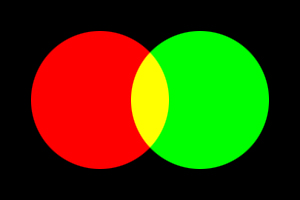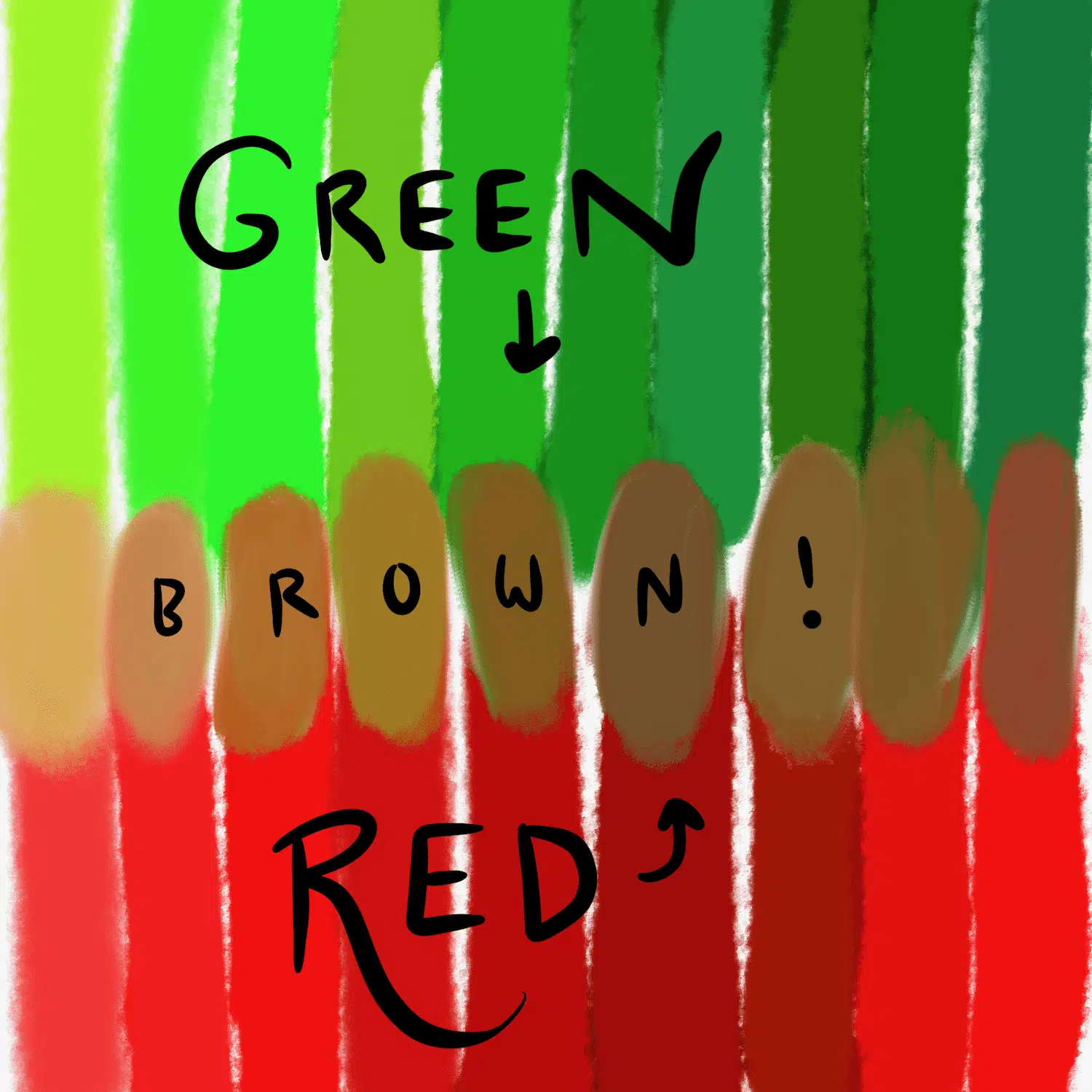Color theory answers practical and scientific questions about how colors interact. Many learners ask: green and what color make red? This question reveals confusion between color systems used in art, printing, and digital screens. Red is considered a primary colour in most systems. This means it is not created by mixing green with any other color. However, understanding how green interacts with red and how red is produced in different models is essential for art, design, and science.

Can Green Make Red? The Direct Answer
Green cannot make red. Red is a fundamental primary in both additive (light) and subtractive (pigments) systems.
-
In light mixing, red is emitted directly as one of the three primaries (RGB).
-
In pigment mixing, red is produced by combining magenta and yellow, not green.
When red and green interact:
-
Light mixing (RGB): red plus green produces yellow.
-
Pigment mixing (paint): red plus green produces brown or gray tones.
Why the Question Exists
People often confuse additive light mixing with subtractive pigment mixing. These two models explain color creation in different domains:
-
Additive model controls light from screens, projectors, and LEDs.
-
Subtractive model controls paints, inks, and natural pigments.
The misunderstanding arises because red and green are opposites on the color wheel. Being complementary, they neutralize each other instead of forming red.
Additive Mixing: Red, Green, and Blue (RGB)
What Happens When Red and Green Light Combine?
When red and green light beams overlap, the human eye perceives yellow light. This occurs because cone cells in the retina respond to overlapping red and green wavelengths. Digital screens and televisions use this effect to display bright yellow.
Where Additive Mixing is Used
-
Television screens use red, green, and blue subpixels to form images.
-
Stage lighting uses colored spotlights to generate visual effects.
-
LED signage relies on RGB combination to display multiple colors.
Subtractive Mixing: Pigments, Paint, and Inks (CMY)
How Pigments Behave in Mixing
Pigments work by absorbing certain wavelengths and reflecting others. When red pigment meets green pigment, each absorbs different parts of the spectrum. The overlap leaves behind muted browns or grays.
How Red is Created in Subtractive Mixing
In printing and painting, red appears when magenta pigment is combined with yellow pigment.
-
More magenta = deeper crimson red.
-
More yellow = warmer scarlet red.
Where Subtractive Mixing is Used
-
Acrylic and oil paints in fine arts.
-
CMYK printers, where cyan, magenta, yellow, and black build full-spectrum images.
-
Textiles and dyes, where pigments are layered to produce strong red fabrics.
Red and Green Together: Results in Different Models
| Mixing System | Red + Green Result | Application Field |
|---|---|---|
| Additive (RGB) | Yellow light | Screens, stage lights |
| Subtractive (Paint) | Brown / Gray | Painting, pigments |
| Printing (CMYK) | Neutral tones | Ink layering, printing |
The Role of Complementary Colors
Green and red sit opposite each other on the traditional color wheel. Complementary pairs have high contrast. Artists use this contrast to create balance and vibrancy. When combined physically in paint, they neutralize into brown. When placed side by side, they intensify each other visually.
Variations of Brown from Red and Green Paint
Factors That Change the Result
-
Undertone of red pigment:
-
Cadmium red = orange bias → warmer browns.
-
Alizarin crimson = blue bias → cooler browns.
-
-
Undertone of green pigment:
-
Phthalo green = blue bias → olive browns.
-
Sap green = yellow bias → earthy browns.
-
-
Mixing ratios:
-
Equal parts = neutral brown.
-
More red = maroon-brown.
-
More green = olive-brown.
-
Practical Uses of Red and Green Mixing
In Art and Painting
-
Landscape painters use red + green mixtures to create soil, bark, and shadow tones.
-
Neutralized browns provide depth in portrait painting.
-
Mixed browns reduce the need for pre-made tube browns.
In Digital Design
-
Web designers rely on red and green light for yellow and orange effects.
-
Accurate RGB balance ensures consistent brand colors across devices.
Step by Step: How to Make Red Correctly
In Pigments
-
Select primary magenta pigment.
-
Select primary yellow pigment.
-
Mix equal parts for balanced red.
-
Adjust ratio for crimson or scarlet tones.
In Printing
-
Printers combine magenta and yellow dots on white paper.
-
Dot density determines the exact hue.
-
Spot red inks may be added for vibrant logos.
Situations Where Red Cannot Be Mixed from Green
-
Red in digital screens is a base light channel.
-
Red in pigment systems arises from magenta and yellow.
-
Green is complementary and neutralizes red.
-
Mixing green with red always produces brown or yellow, never red.
-
Scientific color models confirm no path from green to red.
Ways to Get Different Shades of Red in Paint
-
Mix magenta + yellow (base red).
-
Add more magenta for crimson.
-
Add more yellow for scarlet.
-
Add white for pink tones.
-
Add black for deep burgundy.
Cultural and Symbolic Meaning of Red and Green
-
In Western culture, red and green symbolize Christmas.
-
In traffic systems, red means stop and green means go.
-
In branding, red draws urgency while green signals safety.
-
In art, red expresses passion while green expresses balance.
Scientific Basis of Color Perception
Cone Cells in Human Vision
-
L-cones detect red wavelengths.
-
M-cones detect green wavelengths.
-
Both activated together create yellow perception.
Afterimages and Opponent Process
-
Staring at red creates a green afterimage.
-
Staring at green creates a red afterimage.
-
This supports the opponent-process theory of vision.
Advanced Applications
In Stage Lighting
Red and green gels produce yellow stage light. Lighting designers exploit this for mood effects.
In Education
Physics classes use overlapping beams to demonstrate additive mixing. Art classes use paint to show subtractive mixing.
In Printing Industry
Red inks require careful magenta and yellow control. Spot inks extend the limited CMYK gamut.
FAQs on “Green and What Color Make Red”
Q1: Can green and blue make red?
No. Green and blue make cyan in additive systems and dark hues in paint.
Q2: Can green mixed with magenta make red?
No. Green plus magenta cancel out and produce gray, not red.
Q3: What colors combine to make true red paint?
Magenta and yellow combine to create true red pigment.
Q4: Why does red plus green make yellow on screens?
Human eyes perceive yellow when red and green light stimulate cones simultaneously.
Q5: Why does red plus green make brown in paint?
Pigments absorb multiple wavelengths, leaving a muddy neutral mix.
Q6: Can you lighten red made from magenta and yellow?
Yes, adding white pigment shifts it toward pink.
Q7: Is red a primary color in all models?
Yes in RGB and RYB, but in CMY, magenta and yellow mix to create red.
Q8: How do printers create vivid red tones?
Printers overlap dense magenta and yellow dots. Spot inks enhance brightness.
Q9: Why are red and green considered complementary?
They are direct opposites on the color wheel, giving maximum contrast.
Q10: Can red and green ever create purple?
No. Purple requires red plus blue, not green.
Learn More: Are Real Estate Agents Liable for Bad Tenants?
Search Google or Type a URL: Complete Expert Guide
Conclusion
The question “green and what color make red” reflects confusion between additive and subtractive color systems. Red cannot be made by mixing green with any other color. Red is fundamental in light and pigment models. In practice:
-
Light systems (RGB): red + green = yellow.
-
Pigment systems (paint): red + green = brown.
-
True red pigment: magenta + yellow.
Understanding these systems gives artists, designers, and scientists precise control over color creation and application.

